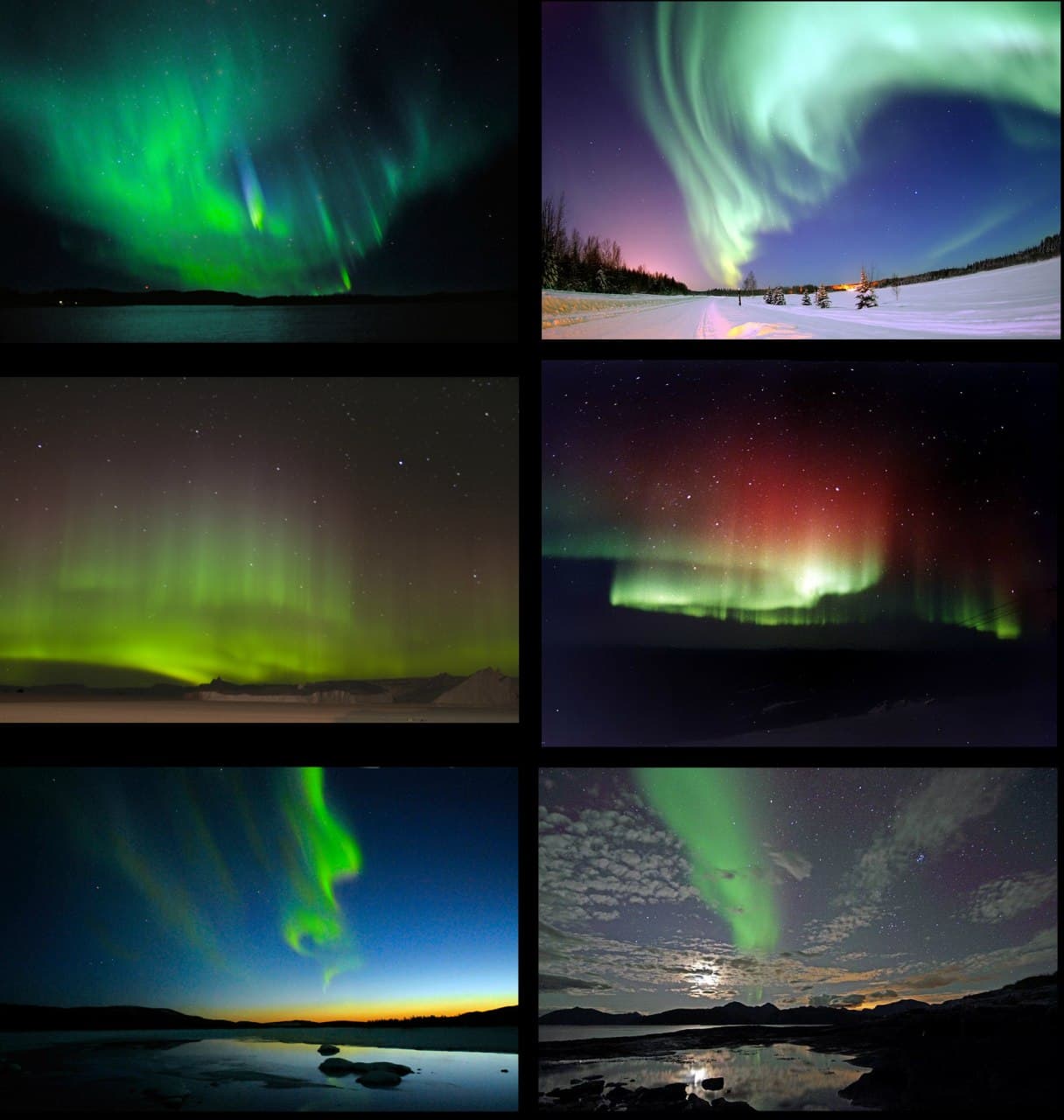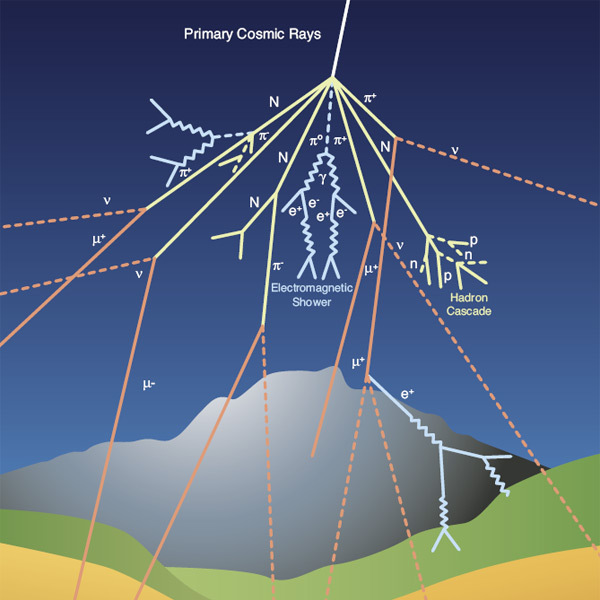Origins and characteristics
In this tab you will find:
- some of the motivations for studying cosmic rays;
- definitions: primary radiation and secondary particle air shower;
- a brief history of muons' discovery, a particle relevant to our experimental activities.
Have a good read!
Discovered in 1912 by Austrian physicist Victor Hess, cosmic rays are relativistic particles (mostly composed of protons and light nuclei) produced by supernovae and other sources in our galaxy and beyond.
Experimental evidence suggests that cosmic rays with energy up to eV are created and accelerated in stellar explosions in the Milky Way. The most energetic ones (millions of times more energetic than the protons accelerated in the LHC at TeV = eV) must originate outside our galaxy.
See the Additional Information / Small Lexicon / Glossary of "Cosmic" tab to learn more about eV (electron volt).
How do cosmic rays reach such high energies? Where are the natural accelerators? We know, for example, that among low-energy cosmic rays, there are those arriving from the Sun in a flow of charged particles known as solar wind. These are responsible for the light show of the auroras/polar lights (Figure 1). In high-latitude regions, when struck by solar wind particles, ionization and excitation resulting from atmospheric constituents emit light of varying colors and complexity. For blue and violet light tones: interactions with nitrogen molecules; for green and red light tones: interactions with oxygen molecules.

Figure 1: Images of polar auroras in the north ("aurora borealis") and south ("aurora australis")
See the Additional Information / Current Experiments tab to learn more about how high-energy cosmic rays are studied by global collaborations of astroparticle physicists.
See the Research/How We Detect Cosmic Rays tab to learn more about the detectors and experiments.
Determining the origin of high-energy cosmic particles becomes more difficult as they suffer the influence of interstellar space magnetic fields. To learn about the nature of high-energy cosmic rays, scientists measure their energy and direction as they arrive from space. Lower energy cosmic rays are measured directly by sending detectors high in the Earth's atmosphere with balloons and satellites. For high-energy cosmic rays, however, it becomes more efficient to explore the formation of extensive atmospheric showers by placing various types of detectors on the surface, for example.
When a particle collides with a molecule in Earth's atmosphere, a cascade of secondary particles is generated (illustration in Figure 2). For example, a proton from space hits another proton (or a neutron) in atmospheric air's atomic nucleus (oxygen or nitrogen). Part of the energy of the incident proton (approximately 40%) is transformed into new particles (secondary) with their respective masses and energies.

Figure 2: Interaction of a primary cosmic ray with the atmosphere generating a cascade of secondary particles.
Image credits: CERN Document Server - "Cosmic rays: particles from outer space".
The cascade of secondary particles, also called secondary radiation, is mostly composed of protons, electrons, and muons. The interactions of cosmic rays with atoms in the atmosphere also trigger transformations that give rise to radioactive nuclei. That is the case of the carbon isotope C, important for dating fossils, and formed in the upper layers of the atmosphere as a result of the bombardment of nitrogen atoms by neutrons contained in cosmic rays:
NnCH
Penetrating muons from cosmic radiation
The muon is an elementary subatomic particle similar to the electron but more massive (m m). It is produced in the upper atmosphere by the decay of pions created by primary cosmic rays. It has two forms: one with a negative charge: and another, its antiparticle, positively charged: .
See the tab Additional Information / Anatomy of Cosmic Particles / The Standard Model of particle physics to learn more about the muon, a particle from the second generation of leptons in the Standard Model.
The muon was discovered as a constituent of the cosmic ray particle cascade (Air shower) by American physicists Carl D. Anderson and Seth Neddermeyer in 1936. Because of its mass, it was initially thought to be the particle predicted by the Japanese physicist Yukawa Hideki in 1935, meant to explain the strong interaction that holds protons and neutrons together in the nucleus. Later, discoveries concluded that the muon belongs to the group of subatomic particles called leptons, which do not react with the nucleus or other particles through strong interaction. Muons are relatively unstable, with a lifetime of s before they decay, via weak interaction, into an electron and two types of neutrinos (). Source: The Review of Particle Physics (2022) - Particle Data Group Summary Tables.
Because of their electrical charge, before decaying, muons lose energy by displacing electrons from atoms in the atmospheric air (ionization). However, as they travel at speeds close to that of light, the ionization process dissipates energy in relatively small amounts, ensuring that muons can still travel across the Earth's surface. This behavior of penetrating muons from cosmic radiation confirms the phenomenon of time dilation predicted by Einstein in the formulation of the theory of special relativity.
Suppose a muon is produced by the decay of a pion 20 km from the Earth's surface. Assuming the muon travels at the speed of light, with a lifetime of s, it would travel m, thus not reaching the surface of the Earth. But then, how do muons reach the Earth's surface? According to the formulation of time dilation that Einstein proposed, time passes slower for a muon moving close to the speed of light than for a muon at rest. As a result, the muon moving at relativistic speeds can reach the Earth. You will prove this with our Cosmic detector!